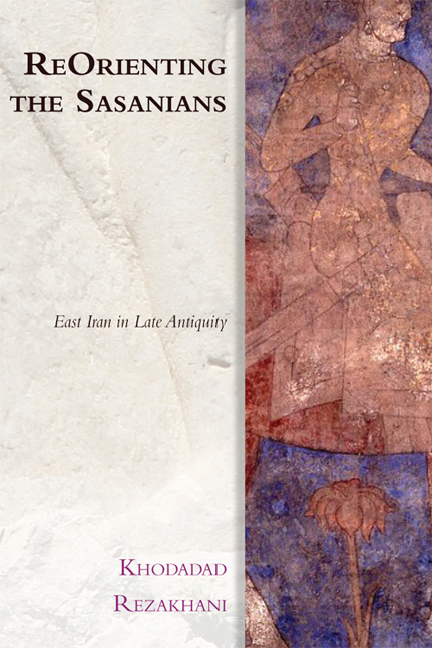Book contents
- Frontmatter
- Contents
- List of Illustrations
- Acknowledgements
- Series Editor's Preface
- Maps
- Preface
- Introduction
- 1 The Sasanians and the Sistanis
- 2 The Kushans and the Sasanians
- 3 The Kushano-Sasanians in East Iran
- 4 The Iranian Huns and the Kidarites
- 5 The Alkhans in the Southern Hindu Kush
- 6 The Hephthalite ‘Empire’ and its Successors
- 7 Sogdiana in the Kidarite and Hephthalite Periods
- 8 The Nēzak and Turk Periods
- 9 Tokharistan and Sogdiana in the Late Sasanian Period
- 10 General Conclusions and Postscript
- 11 Epilogue and Excursus on the Shahnameh
- Bibliography
- Index
10 - General Conclusions and Postscript
Published online by Cambridge University Press: 07 December 2017
- Frontmatter
- Contents
- List of Illustrations
- Acknowledgements
- Series Editor's Preface
- Maps
- Preface
- Introduction
- 1 The Sasanians and the Sistanis
- 2 The Kushans and the Sasanians
- 3 The Kushano-Sasanians in East Iran
- 4 The Iranian Huns and the Kidarites
- 5 The Alkhans in the Southern Hindu Kush
- 6 The Hephthalite ‘Empire’ and its Successors
- 7 Sogdiana in the Kidarite and Hephthalite Periods
- 8 The Nēzak and Turk Periods
- 9 Tokharistan and Sogdiana in the Late Sasanian Period
- 10 General Conclusions and Postscript
- 11 Epilogue and Excursus on the Shahnameh
- Bibliography
- Index
Summary
In world history, certain regions emerge as dominant players in regional and interregional historical events, and they either continue their ascendance or fade into the background. We are used to viewing regions in a hegemonic way, and consider hegemony to be based on inherent and long-term advantages, showing essential centralities that are based on repeating successful patterns of historical activity. World historians such as Marshall Hodgson identified five ‘civilisational cores’ in Eurasia. A wedge between the Chinese and the Persianate cores, Central Asia was then placed on the periphery, the ‘cleavage’ between two great civilisational cores of eastern and western Eurasia (Hodgson 1963: 233–4).
Central Asia, however, proves anything but peripheral in the medieval period. The western part, the regions here called East Iran, became increasingly ‘central’ in the history of West and South Asia, as well as the rest of Eurasia, between the eighth and fifteenth centuries. This centrality was determining enough for a renowned world historian to dedicate a brief monograph to it, despite the fact that it relied on necessarily cursory and conjectural evidence to prove its point (Frank 1992). Many other attempts, mostly focusing on the Chinese ‘Inner Asia’ and the ‘Silk Road’, try to understand the region in the context of its importance to its neighbouring civilisations, or of the theme of the Silk Road. A few others focus on the region itself, including Peter Golden's 2011 offering, part of a series concerned with regions in world history, which despite its title, does not much address the issue of Central Asia's role in world history in the theoretical sense and in any of its known conceptualisations. A special mention here has to be made of Christopher Beckwit' controversial 2012 book, trying to connect the origins of ‘medieval’ science, or at least philosophical methodology, to the Buddhist monasteries of Central Asia. A full review of the thesis needs much more than the present space, but one has to only mention that throughout the book, the writer really does not go into the simple matter of where the monasteries he is speaking of are located, or what their local political, cultural, economic, or social context is. His monasteries exist mostly detached from the world around them, and reveal nothing about why they might have achieved what they supposedly did.
- Type
- Chapter
- Information
- ReOrienting the SasaniansEast Iran in Late Antiquity, pp. 185 - 193Publisher: Edinburgh University PressPrint publication year: 2017



